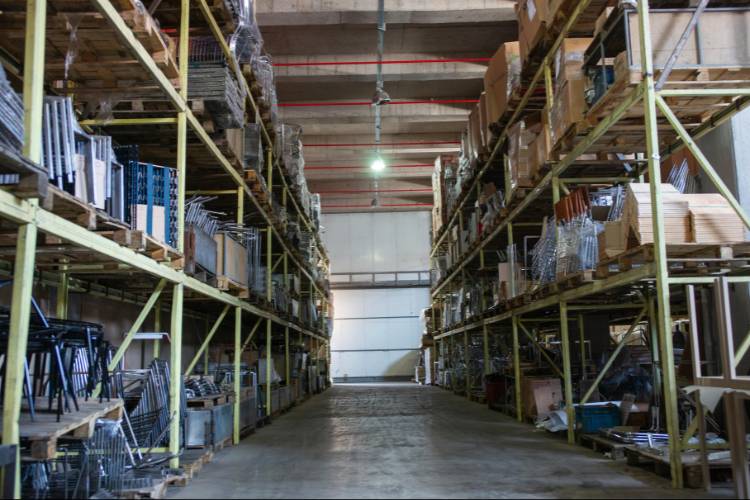As subcontractors scale, they encounter new problems, new opportunities, and more operational changes. Billd sat down with seasoned construction professional turned consultant Jerry Aliberti, who offers consulting services through his firm Pro-Accel, to discuss different challenges subs encounter as their businesses grow in size and revenue. Aliberti shared insights based on his experiences and provided suggestions on how subs can manage these changes effectively.
Something subcontractors of all sizes must focus on is their working capital options and how these options can help manage any cash flow challenges that might arise. To achieve continuous growth, all contractors must maintain good cash flow/profits and must fully understand their current working capital and what’s required to achieve their goals. Start by assessing your company’s current financial position to understand if your cash flow needs attention. Once your cash flow is stable, you can identify any adjustments you need to make internally, explore available bank lines of credit, and consider other financial solutions to fulfill your goals.
The first few stages of growth for a subcontractor can be some of the hardest, but also the most pivotal. This is where owners create the foundation on which the rest of their business will be built. In this article, Aliberti discusses the challenges subs face at the $2-8M stage, providing suggestions for how to manage these early changes effectively.
Table of Contents
The $2-4 Million Subcontractor: Establishing the Foundation
The biggest challenges subcontractors at this revenue level face revolve around generating business and hiring the right team to get work done. Coming off a previous “employee mindset,” owners are transitioning to thinking like a leader and developing the soft skills needed to lead their organization.
As potentially a first-time owner/boss, subs at this tier are focused on making good first impressions and reframing themselves as an entrepreneur within their network. Imposter syndrome is rampant here, but the ability to lead with focus and ambition can have a massive impact on the company’s eventual success.
Key Challenges at this Stage
- Finding Good Clients with Acceptable Payment Terms: The greatest difficulty here is often finding good GCs. When you’re just starting out it’s hard to prove you can do the work until you do it, and with only a couple of years under your belt it might be hard to get pre-qualified with the majority of GCs. At this point, subs are working with smaller GCs, since they are easier to form relationships with. Unfortunately working with smaller GCs also means the payment terms can be worse, often exceeding net 30. Subs need to take an almost aggressive approach to payment, be proactive about their pay apps, advocate for fair pay, and even overbill, while they keep a close eye on things like retainage.
- Employee Recruitment: At this stage, attracting top talent is difficult thanks to limited resources and reputation. Subs aren’t able to offer the same big salaries and comprehensive benefit packages or bonuses as larger, more established companies. They may have to hire less experienced people with potential who can grow with the company. However, owners still need to focus on getting key hires in place early. The inability to get the right people in the door at this stage may make long-term growth difficult.
- Process Development: Young companies often lack established processes, leading to a sense of disorganization, which is common at young companies across any industry. “Winging it” is the common culture at this stage. While it’s not ideal for a long period of time, it likely won’t hinder the company’s growth. In fact, it’s often necessary at this stage to feel out different processes to determine what will work best for the business and update these processes as business needs change.
- Cash Flow Management: Cash flow is the greatest challenge companies experience at this stage. It’s a problem now and will continue to persist as the business grows, so it’s important to have strategies in place to mitigate this early on. This pain is exacerbated by prolonged GC payment timelines. Limited cash flow requires careful financial planning to support business operations.
Operational Changes to Make
Aliberti insists on keeping it relatively simple at this stage. “Construction is the hardest industry to automate, because each project is so unique and has its own character.” That said, it’s worth finding out what can be streamlined without reinventing the wheel.
At this stage, companies should focus on:
- Tighter Process Development: Develop processes for things like submittals or the estimating-to-project-team handoff, where a lot of failure tends to occur. It’s imperative to build out your processes as you continue to grow so your existing and new hires can transition properly and the owner can continue to remove themselves from the day-to-day operations.
- Regimented Employee Training: Streamline the handoff between new and old hires, perhaps with video training.
- Tier-Ranking Potential Projects: Establish tiers that rank projects and GCs based on desirability and fit. This can help them understand what to bid and what not to bid. For example:
- A-Tier projects can be those that fall within the subs’s clear-cut expertise, with GCs who pay quickly
- B-Tier projects can either be those that the sub doesn’t want as aggressively, “filler” projects with lower profits than A-tiers, or otherwise good projects with GCs who don’t pay as quickly
- C-Tier projects can be smaller projects with a GC the sub hasn’t worked with before
- Potentially Testing New Software: Some technologies might be premature at this stage (like estimating software), but it’s best to look for construction management tools that the company can grow into based on its goals. Keep things simple and don’t get too caught up with software at this point.
Aliberti’s Best Tip for This Stage: Reinvest into Employees As Much As the Company
Plenty of subs forsake bonuses or only hand them out at the end of the year because they think they need to reserve funds to reinvest in the business. While a business owner should be investing back into the company, they should also invest into their talent. Employees are a huge resource within the business that require reinvestment. Focus on cultivating loyalty among employees.
In addition to creating perks for your employees, training is essential in all stages of business growth. Start to think about what training you may need to provide new or existing employees.
Try Incentive-Based Bonuses: A lack of bonuses can destroy motivation. Aliberti recommends an incentive-based bonus system that offers rewards when certain milestones are hit instead of waiting until the end of the year. Not only could this help subs achieve milestones more quickly, employees feel rewarded and seen.
The $4-8 Million Range: Scaling Up
The decisions the owner makes in their business at this stage will determine its future structural integrity. The $4-8M stage is where committing to sound internal processes is going to make the most difference, unlike the $2-4M stage that can be more exploratory and fluid. The processes the owner develops now are what all later processes will be built upon. A culture of winging it and constantly putting out fires should be corrected at this stage or it will remain a part of the company’s DNA.
Key Challenges at this Stage
Previous challenges like finding the right GCs and employees are still present, but less pressing since the owner (hopefully) already has some good team members in place. Process development and cash flow challenges still exist as well, but the business is better able to address them head on.
Other challenges include:
- Juggling Larger, More Complex Projects: The business owner has more projects, larger projects, and more owners/GCs to navigate. Manpower demands increase as well.
- Risk Assessment: As projects get larger and take longer to complete, the amount of risk they may carry can increase depending on the type of work being performed. For example, contractors should consider change order potential, means of egress, their relationships with the GC, lack of drawing/spec information provided prior to bidding, and more. This risk has to be accounted for and offset as best as possible.
Operational Changes to Make
-
- Delegate: With more money in the business’ pocket, owners can hire more experienced subs or pay the existing team a more competitive rate. This is the owner’s time to get out of the weeds. If they’re making the right hires, then investing that trust and delegating some responsibilities should come easily. Get clear on roles and responsibilities and delegate properly.
- Start Taking Marketing More Seriously – Although most subs find clients without the help of marketing, it’s still important to consider as a way to grow the business. At this stage, marketing will focus on more refined branding and social media presence, something that desirable job candidates and new GCs may consider when they look up a business. Marketing can be outsourced at this revenue tier.
- Start Investing in Newer Technology – Estimating software and a CRM (customer relationship management) platform become more necessary at this stage. The business may have to start contracting its own subs, and a CRM can help it manage those relationships. As mentioned, a software that the business can grow into is ideal, so it isn’t essential a sub needs to tap into all the software’s functionality. (That said, don’t spend a large portion of the budget on something the business can use 20% of.) As the company bids on larger work, takeoff technology may also become more useful.
- Iterate on Existing Processes: Even the best process that served the business as a $2M business may not work as well when it hits $8M in revenue. The owner has to methodically update and iterate their processes every year as the business grows. That includes introducing new roles as they become necessary in the organization.
- Draft Employee Manuals: The owner should have a tight grasp on their employees’ job functions and the scope of their role. To do that, create employee manuals that outline exactly what someone in a given role is meant to do. How is their role going to align with the company’s future goals? Remember, every new hire will have old processes from their old companies. The owner should vet the employee’s old way of doing things, incorporate whatever they like, and make sure everything aligns with their vision and goals. Manuals are also great for job descriptions when holding interviews to promote alignment and clarity on a role’s expectations.They also help with creating chains of command and help establish new leadership roles.
Hiring at This Stage
The owner can no longer get by with overlapping personnel for estimating, Superintendents, and PMs (Project Managers). They need to separate each department while still finding synergy.
Hires at this stage could include:
- Strong foremen who can push productivity
- Supervisors who can communicate efficiently, track costs, and plan ahead
- Project Managers who have a sense of urgency and are excellent communicators, planners, and strong leaders.
- Full-time bookkeeper or controller; the organization needs someone who truly understands the P&L and covers any gaps in the owner’s command of finances.
Aliberti’s Best Tip for This Stage: Dial In Culture as a Competitive Advantage
At this stage of business maturity, the owner is still determining what works best for the business and defining a competitive advantage. Why should top talent choose to work for this business? Why should GCs pick it over another sub?
A sub’s competitive advantage can span many areas of the business, but few are more important than the culture they’ve established at the company. Is it a culture of fear, fires, and uncertainty, or is it a culture of camaraderie, clarity, and consistency? The best thing the owner can do when trying to set the cultural tone of their company is to simply be intentional about creating it. Bad cultures can happen by accident; good cultures are intentional.
For subcontractors in the $2-8M revenue range, this phase is a critical time of learning and growth. By refining processes, investing in employees, and adopting the right culture, subcontractors can build a foundation for stronger growth. In our next article, Aliberti will share his insights into the $8-25M stage.







